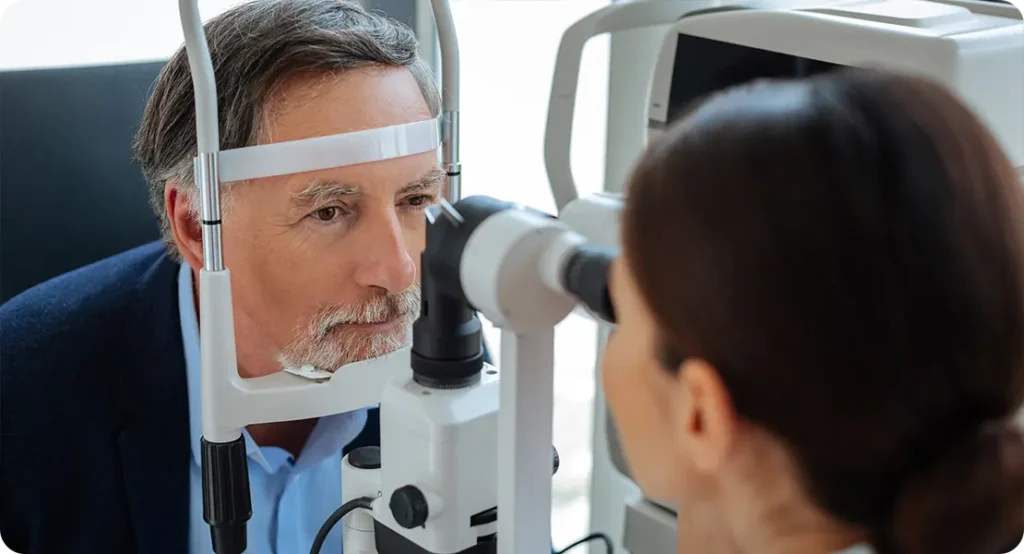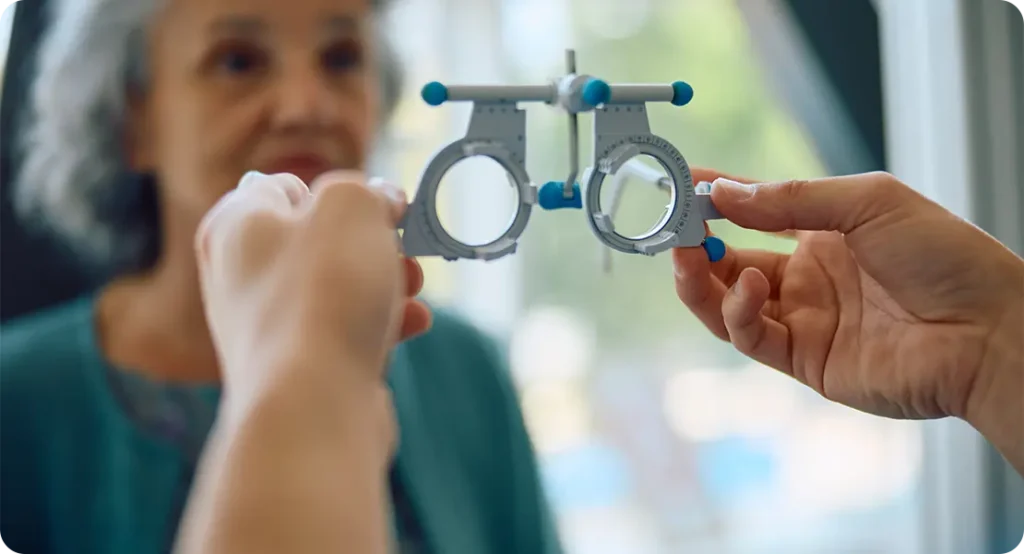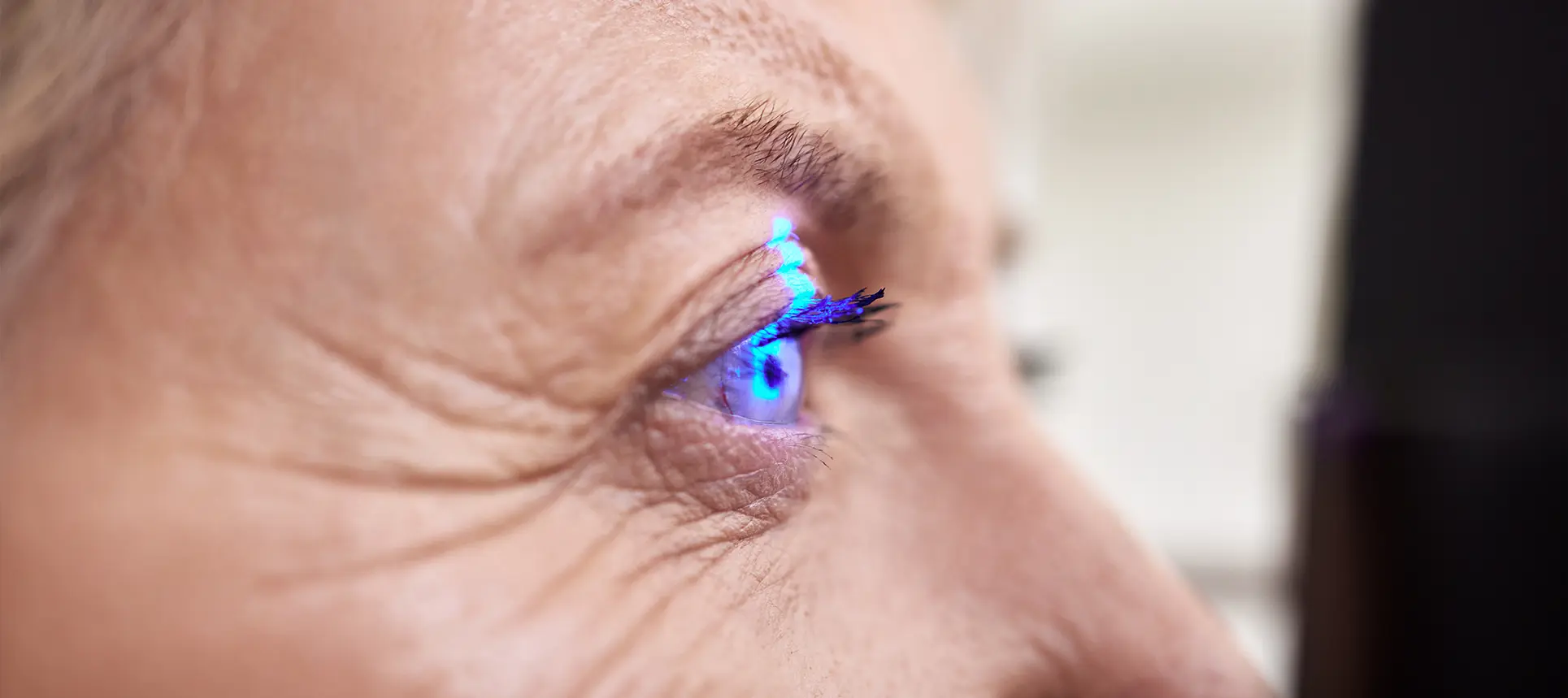If you’ve recently had cataract surgery and your vision’s gone a bit blurry again, chances are someone’s mentioned YAG laser capsulotomy to you. It sounds a bit daunting at first, doesn’t it? But the truth is, it’s a common and straightforward procedure that can really help clear things up—literally. Below, I’ve answered the 13 most common questions patients ask about YAG laser capsulotomy, in plain English and with all the detail you need.
1. What is a YAG laser capsulotomy?
A YAG laser capsulotomy is a quick and painless laser procedure used to treat something called posterior capsule opacification, or PCO for short. This condition can occur months or even years after cataract surgery, and it causes blurry or cloudy vision that might remind you of the original cataract symptoms. The issue isn’t with your lens implant, but rather the membrane—or “capsule”—that holds it in place, which can become cloudy over time.
So during the procedure, the ophthalmologist uses a special laser to make a tiny opening in the centre of that cloudy capsule. This allows light to pass through freely again and usually brings an immediate improvement in your vision. It’s done right in the clinic, you’ll be awake the whole time, and there’s no need for any cuts or stitches.
It’s completely non-invasive and takes just a few minutes to complete. Most people notice a difference in their sight not long after the laser is used. It’s one of those rare medical procedures that’s both incredibly effective and very low risk, which is always reassuring.
Think of it like wiping a foggy window so you can see clearly again. The laser doesn’t touch your actual artificial lens or your eye in a physical way—it just clears the part that’s causing the haze. That’s why it’s considered such a safe and popular option for post-cataract vision problems.
2. Why do some people need this procedure after cataract surgery?
After cataract surgery, the natural lens of your eye has been replaced with a clear artificial one. But the thin membrane that originally held your old lens in place—the capsule—is usually left intact to support the new one. Over time, that capsule can become cloudy, which is something that happens in around 20–30% of people. It’s not a complication of the surgery itself, but rather a natural healing response of the eye.
You might hear it described as a “secondary cataract”, but that’s a bit misleading. It’s not a new cataract at all—it’s just this clouding of the capsule that makes things look blurred again. Many people go months or even years after their cataract surgery without any issue, but for others, the haziness creeps in and starts to affect vision quality.
What’s really important to know is that this isn’t something you’ve done wrong or failed to prevent. It’s simply how some eyes react post-surgery. And once it starts to interfere with your ability to read, drive, or recognise faces, that’s when your eye specialist will likely recommend the YAG laser treatment.
The good news is it’s easily fixed. You don’t have to go through another full surgery. YAG laser capsulotomy is the go-to solution because it’s fast, effective, and doesn’t require any downtime. In fact, most people are in and out of the clinic within an hour.
3. Is the procedure painful or uncomfortable?
One of the most common worries people have is whether the YAG laser treatment will hurt—but you’ll be pleased to hear that it’s completely painless. Before the laser is used, the ophthalmologist puts in some numbing eye drops, so you won’t feel a thing during the actual procedure. You might notice a little pressure or a mild sensation of light, but it’s not uncomfortable at all.
You’ll be sitting at a laser machine that looks similar to the one used for your eye checks. Your head will rest against a support to keep things steady. The whole thing only takes about 5 to 10 minutes per eye, and most people are surprised by how quick and simple it is. There are no injections, no stitches, and no need for sedation or general anaesthesia.

Afterwards, your eye might feel a bit dry or gritty for a few hours, but this usually settles quickly. You may also be given some anti-inflammatory drops to use for a few days, just to keep things calm while your eye adjusts. But generally, there’s very little in the way of discomfort during recovery.
So if pain is what’s making you hesitate, don’t worry—this is genuinely one of the least invasive and most comfortable eye procedures available. It’s more like getting your eyes examined than having actual surgery.
4. How soon will I see results after the procedure?
Many people notice clearer vision within just a few hours of the procedure—sometimes even straight away. Once the cloudy part of the capsule has been opened up by the laser, light can pass through to the retina without distortion, so things usually sharpen up fairly quickly. That said, everyone’s experience is a bit different, and some might take a day or two to fully appreciate the improvement.
Straight after the treatment, your vision may be slightly blurry or you might see floaters—those little black or grey specks that drift across your field of vision. This is quite normal and usually settles within a few days. It’s just your eye adjusting and clearing out the small fragments from the laser opening.
Most people find that colours appear brighter and outlines sharper, especially if they were struggling with glare or fuzzy sight beforehand. It can feel like someone’s cleaned your glasses or wiped a foggy windscreen—it really is that noticeable in most cases.
However, it’s worth giving your eyes a bit of time to settle. If you’ve got other eye conditions like macular degeneration or diabetic retinopathy, you might not get a perfect result, but you should still notice some improvement. Your eye specialist will be able to talk through what to realistically expect.
5. Are there any risks or side effects I should know about?
YAG laser capsulotomy is considered a very safe procedure, but like anything medical, there are a few potential risks. The most common side effects are floaters and mild inflammation right after the treatment. Floaters can be a bit annoying, but they usually fade away within a few days or weeks. Your eye doctor might also give you anti-inflammatory drops to help your eye settle down.
There’s also a very small risk of increased eye pressure, especially in people who are prone to glaucoma. That’s why your eye pressure will usually be checked before and after the procedure to make sure everything is staying within a safe range. If needed, temporary eye drops can be used to manage any spike in pressure.

More rarely, there could be a disturbance to the artificial lens implant itself—like it shifting slightly out of place—but this is extremely uncommon. Retinal detachment is another rare risk, but again, it’s very unlikely, especially if your retina looked healthy beforehand. Your ophthalmologist will screen you for anything that might increase your risk before going ahead with the treatment.
All in all, serious complications are rare. For most people, the benefits far outweigh the minimal risks, especially when cloudy vision is interfering with daily life. It’s a good idea to have a proper chat with your specialist beforehand so you feel fully comfortable and informed.
6. Do I need to prepare for the procedure in any way?
Luckily, there’s very little you need to do before a YAG laser capsulotomy. It’s not like a big operation where you have to fast or stop medications. In most cases, you can eat and drink as usual beforehand, and you don’t have to stop your regular eye drops unless your specialist tells you otherwise.
That said, it’s a good idea to arrange for someone to accompany you or at least pick you up afterwards. Your pupil will be dilated with drops before the procedure, which can leave your vision a bit blurred and sensitive to light for a few hours. Driving yourself home afterwards isn’t recommended until your sight returns to normal.
Make sure to bring any glasses or sunglasses you normally use, as well as a list of any medications you’re on. If you wear contact lenses, you’ll usually be asked not to wear them to the appointment—just stick with your glasses that day.
And most importantly, try not to worry. It’s a straightforward appointment and your ophthalmologist will talk you through everything step by step. If you’ve got any questions or concerns, jot them down beforehand so you don’t forget to ask.
7. Will I need time off work or activities afterwards?
Most people are back to their normal routines either the same day or the very next. It’s one of the nice things about YAG laser capsulotomy—there’s virtually no downtime. You might want to take it easy for the rest of the day, especially if your eyes feel sensitive or your vision’s still a bit blurry from the dilating drops.
Driving is generally safe once your vision clears up, which is usually by the next day. Just be cautious and don’t get behind the wheel if things still look foggy or if the floaters are distracting you. It’s better to be safe and wait until your sight is fully stable.
As for things like reading, watching TV, or using your phone, you can usually get back to all of that fairly quickly. If you’re into exercise or more physical activities, it’s fine to resume them after a day or two—there’s no surgical wound to worry about or stitches to protect.
Just remember to use any drops your specialist gives you and attend your follow-up appointment if one’s been scheduled. These little things help make sure your recovery stays on track and your vision gets the full benefit of the treatment.
8. Can the cloudy vision come back after the laser treatment?
This is a common question, and the short answer is: it’s very unlikely. Once you’ve had a YAG laser capsulotomy, the cloudy back layer of the capsule—the bit causing the blur—is permanently opened. That means it can’t grow back or get cloudy again in the same spot. For most people, it’s a one-and-done kind of procedure.
However, some people do report floaters or minor changes in vision later on, and they sometimes worry the cloudiness has returned. In most cases, it’s not the capsule becoming opaque again, but something unrelated—like dry eyes, other eye conditions, or normal ageing changes in the retina or vitreous gel.
It’s good to know that you won’t need another YAG treatment on the same eye for the same problem. That particular issue—the posterior capsule opacification—has been fixed for good once the laser has done its job. Any future vision issues would need a separate check-up to identify a new cause.
So if your vision goes blurry again after the procedure, don’t panic. It’s not the same problem coming back. Just book an appointment and get your eyes checked to see what’s going on—it could be something minor or easily treatable.
9. Will I still need glasses after YAG laser capsulotomy?
This really depends on what your vision was like before the procedure. YAG laser capsulotomy clears the cloudiness caused by posterior capsule opacification, but it doesn’t change your prescription or correct other issues like short-sightedness, long-sightedness, or astigmatism. So if you needed glasses before, chances are you’ll still need them after.

What it does do is make your existing vision sharper and more focused. So you might notice that your glasses work better or feel more effective once the haze is gone. Some people even find they can get away without glasses for certain tasks, particularly reading or watching TV, if they had a multifocal or accommodating lens implant.
After the laser procedure, it’s quite normal to be re-tested for a new glasses prescription, especially if your last one was taken when your vision was blurry. A more accurate prescription can be given once your eyes have had a bit of time to settle and recover—usually within a couple of weeks.
So while YAG capsulotomy won’t replace your glasses, it often improves the clarity of your sight enough that you feel much more comfortable wearing them—or possibly need them less often. Your optician will help guide you on what’s best based on your individual needs.
10. Is it safe to have YAG laser capsulotomy in both eyes?
Yes, it’s completely safe to have the procedure in both eyes if you need it. Sometimes, both capsules become cloudy around the same time, but more often it happens in one eye first, and the other might follow months or years later. Your ophthalmologist will keep an eye on both and advise you when or if the second eye needs treatment.
Occasionally, both eyes are done on the same day, especially if the vision in both is quite poor and affecting your daily activities. This is generally fine and well tolerated, but it depends on how comfortable you are with it and how your eyes are responding overall. Some people prefer to space the treatments out to see how the first eye goes before committing to the second.
If you do have both eyes treated on the same day, expect slightly more visual disturbance afterwards—such as more floaters or temporary light sensitivity. But it doesn’t increase the risk in any significant way. The procedure itself is just as quick and safe for the second eye as it is for the first.
So if your second eye starts to go cloudy and you’re noticing the same issues again, don’t hesitate to bring it up. The process is just as straightforward, and most people are pleased with how consistent the results are between both eyes.
11. What are the floaters people talk about after the treatment?
Floaters are those little shapes or specks you might notice drifting across your field of vision—often more obvious when you’re looking at a bright surface, like a white wall or a clear sky. After YAG laser capsulotomy, some floaters are common, and they’re usually nothing to worry about.
They’re caused by tiny bits of debris in the eye’s vitreous gel or small remnants from the laser opening that move around in the fluid inside your eye. The good news is, they usually settle down or become less noticeable with time as your brain gets used to ignoring them. For most people, they’re a temporary nuisance at worst.
However, if you suddenly notice a large number of floaters, flashing lights, or a dark curtain-like shadow coming across your vision, that could be a sign of something more serious, like a retinal tear or detachment. It’s rare, but it’s important to get checked urgently if this happens, just to rule it out.
So yes—floaters can be a short-term side effect of the laser treatment, but in nearly all cases, they fade into the background and stop being bothersome within days or weeks. If they persist or get worse, though, it’s always worth getting your eyes re-checked for peace of mind.
12. Can I have YAG laser capsulotomy if I have other eye conditions?
In most cases, yes—you can still have the procedure even if you’ve got other eye conditions like glaucoma, macular degeneration, or diabetic retinopathy. The key is that your ophthalmologist will take a careful look at the overall health of your eye and weigh up the benefits of the treatment for you specifically.

For example, if you’ve got glaucoma, they’ll monitor your eye pressure closely before and after the treatment, because there’s a small risk the laser could cause a temporary spike. It’s not usually a deal-breaker, but it does mean your follow-up care might include extra checks or pressure-lowering drops.
If you have a condition affecting your retina, like age-related macular degeneration, the laser won’t fix that problem—it only clears the haziness from the capsule. So while you’ll likely notice some improvement, it won’t restore perfect vision if there’s already damage further back in the eye.
Your specialist will give you a realistic picture of what to expect, and may suggest delaying the procedure if another issue needs attention first. But in general, YAG laser capsulotomy is still considered safe and effective for most people, even with complex eye histories.
13. How long does the improvement in vision last?
The improvement from YAG laser capsulotomy is long-lasting—often permanent. Once the cloudy part of the capsule is opened with the laser, it doesn’t grow back, so the clear vision you gain is expected to stay that way. For the vast majority of people, it’s a one-time fix that doesn’t need repeating.
Of course, your eyes will continue to age like the rest of your body, so other vision changes could still happen down the line. You might develop unrelated conditions like dry eyes, floaters, or macular issues as you get older—but these aren’t caused by the YAG procedure itself.
It’s also possible your glasses prescription might change over time, just as it would naturally. So if your vision starts to feel off again months or years after the treatment, it’s worth booking an eye test. It might just be that your lenses need a tweak rather than anything wrong with the capsulotomy.
In short, the clarity you get from the YAG laser treatment should last for many years, if not indefinitely. It’s one of the most reliable ways to restore sharp vision after cataract surgery, and for most people, it makes a huge difference to their daily life.
Conclusion: Clearer Vision Is Just a Step Away
Hopefully, this has cleared up some of the confusion around YAG laser capsulotomy. It’s perfectly normal to have questions, especially when your eyesight is involved—but as you’ve seen, the procedure is one of the safest and most effective ways to restore your vision after cataract surgery. It’s quick, painless, and backed by years of solid results.
If you’re struggling with cloudy vision again after your cataract operation, it’s worth booking a chat with your eye specialist. You’re not going backwards, and you don’t need to live with that blur. Chances are, a simple YAG laser treatment could bring your sight back into focus and help you enjoy the full benefits of your original cataract surgery.
Always remember—your eyes are unique, and so is your treatment journey. Ask your specialist anything you’re unsure about, and don’t be afraid to take your time deciding what’s right for you. But if a YAG capsulotomy is recommended, you can feel confident that you’re in safe hands.
If you’d like further information or personal advice about YAG laser capsulotomy, feel free to contact us at the London Cataract Centre—we’re here to help.

